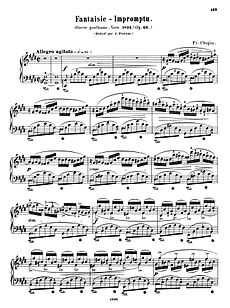Character piece

Character piece is a calque of the German Charakterstück, a term, not very precisely defined, used for a broad range of 19th century piano music based on a single idea or program. The term is less frequently applied to music for another instrument (never voice) with piano accompaniment, but very seldom for larger ensembles.
Character pieces are a staple of Romantic music, and are essential to that movement's interest in the evocation of particular moods or moments. What distinguishes character pieces is the specificity of the idea they invoke. Many character pieces are composed in ternary form, but that form is not universal in the genre. A common feature is a title expressive of the character intended, such as Stephen Heller's Voyage autour de ma chambre ("Voyage around my room"), an early example of the genre. Other character pieces have titles suggesting brevity and singularity of concept, such as Beethoven's Bagatelles or Debussy's Préludes, or casual construction: the title Impromptu is common. Many 19th century nocturnes and intermezzi are character pieces as well, including those of Chopin and Brahms, respectively.
Large sets of many individual character pieces, intended to be played as a single piece of music, were not uncommon; Schumann's many works of this form (including Kreisleriana and Carnaval) are the best known examples. In the late 19th and twentieth centuries, as piano music became ambitious and larger in scale, the scope of what a character piece could reference grew as well. The New Grove cites Smetana's "Festival of the Gypsy Peasants" and Sibelius's "The Oarsman" as examples of this later trend.
References
- Brown, Maurice J.E. "Character piece." Grove Music Online, http://www.grovemusic.com.
- Randel, Don Michael. Harvard Concise Dictionary of Music. Harvard UP, 1978.
| ||||||||||||||||||||||||||